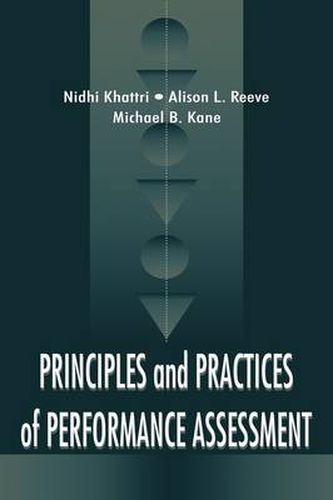Readings Newsletter
Become a Readings Member to make your shopping experience even easier.
Sign in or sign up for free!
You’re not far away from qualifying for FREE standard shipping within Australia
You’ve qualified for FREE standard shipping within Australia
The cart is loading…






This volume explores the recent American national trend toward adoption of performance assessments. Embraced at all levels of educational decision-making - state, district, school and teacher - the shapes these assessments take and the effects they have at the classroom level can differ significantly from one setting to another. Based on case studies of 16 schools, this study describes what performance assessments actually look like - the types of tasks they pose to children, the scoring methods used, the purposes to which they are put, and how they fit in with other components of assessment systems. It also shows how they differ when they are introduced by state departments of education, districts and schools themselves. Factors that affect policy makers’ and educators’ abilities to successfully design and introduce performance assessments are also explored. These include the purposeful coordination of performance assessment with related education reforms, such as the adoption of content and student performance standards, and the professional development for teachers necessary to the successful implementation of performance assessments. Barriers to adoption, most notably the challenges of developing a technically sound performance assessment, are discussed as well. Crucial to teachers’ ability to appropriate performance assessments for use in their own classrooms is their involvement in designing and implementing them. While it would be impossible for state or school district to involve all teachers in the design of a performance assessment, they can take steps to foster teachers’ understanding of the purposes and methods of the assessment, thereby supporting their ability to use similar methods in their daily teaching. Toward that end, this book describes the experiences of teachers and students with a range of assessments that all fall under the umbrella of performance assessment. In addition, it provides: illustrations of those experiences across a diverse group of schools; descriptions of the trade-offs inherent in developing a student assessment system; demonstrations of why no single assessment can be all things to all people ; and insights for teachers, administrators, policy makers and researchers who want to improve their understanding of how performance assessments work in practice and how they may best serve to improve teaching and learning.
$9.00 standard shipping within Australia
FREE standard shipping within Australia for orders over $100.00
Express & International shipping calculated at checkout
This volume explores the recent American national trend toward adoption of performance assessments. Embraced at all levels of educational decision-making - state, district, school and teacher - the shapes these assessments take and the effects they have at the classroom level can differ significantly from one setting to another. Based on case studies of 16 schools, this study describes what performance assessments actually look like - the types of tasks they pose to children, the scoring methods used, the purposes to which they are put, and how they fit in with other components of assessment systems. It also shows how they differ when they are introduced by state departments of education, districts and schools themselves. Factors that affect policy makers’ and educators’ abilities to successfully design and introduce performance assessments are also explored. These include the purposeful coordination of performance assessment with related education reforms, such as the adoption of content and student performance standards, and the professional development for teachers necessary to the successful implementation of performance assessments. Barriers to adoption, most notably the challenges of developing a technically sound performance assessment, are discussed as well. Crucial to teachers’ ability to appropriate performance assessments for use in their own classrooms is their involvement in designing and implementing them. While it would be impossible for state or school district to involve all teachers in the design of a performance assessment, they can take steps to foster teachers’ understanding of the purposes and methods of the assessment, thereby supporting their ability to use similar methods in their daily teaching. Toward that end, this book describes the experiences of teachers and students with a range of assessments that all fall under the umbrella of performance assessment. In addition, it provides: illustrations of those experiences across a diverse group of schools; descriptions of the trade-offs inherent in developing a student assessment system; demonstrations of why no single assessment can be all things to all people ; and insights for teachers, administrators, policy makers and researchers who want to improve their understanding of how performance assessments work in practice and how they may best serve to improve teaching and learning.